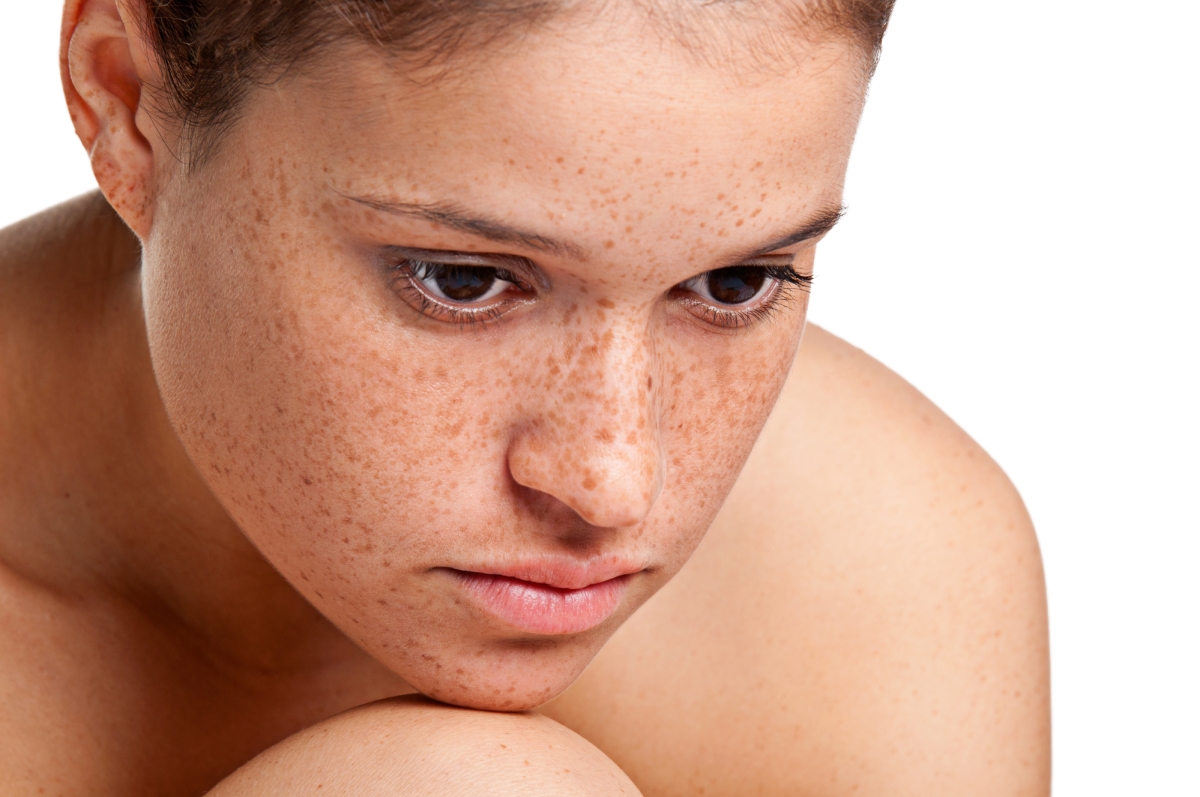Freckles are small flat spots that are usually found on sun-exposed areas of your body. They’re tan, red, light brown or dark brown. Freckles are extremely common and aren’t a health threat. They’re more often seen in the summer.
Freckles are the result of an overproduction of melanin. Melanin is a pigment that gives your hair, skin and eyes (your “complexion”) its color.
Freckles on your lips might resemble other lesions, including moles or a lesion associated with Peutz-Jeghers syndrome. This is an inherited condition in which one of the symptoms is dark-colored spots on various parts of your body, including your lips.
Melanin, produced by skin cells called melanocytes, protects your skin from sun damage by absorbing and reflecting ultraviolet light (UV). If you have a light, or fair complexion, your melanocytes make more melanin when your skin is exposed to the sun. Instead of tanning, you’re more likely to develop freckles.
Freckles develop mostly due to exposure to ultraviolet (UV) radiation from the sun. Other causes include:
- Genetics: Several genes are associated with freckling.
- Xeroderma pigmentosum: This is a rare disease that causes increased sensitivity to ultraviolet light, such as the sun.
There are two categories of freckles: ephelides and solar lentigines. Ephelides are the common type most people think of as freckles. Solar lentigines are dark patches of skin that develop during adulthood. This includes freckles, aging spots, and sunspots. The two types of freckles can look similar but differ in other ways such as their development.
Ephelides:
Ephelides are flat and usually red or tan-to-brown in color. Ephelides are the freckles that most people think of when they hear the word “freckle.” Sun exposure and sunburns mainly cause them. They typically appear on body areas exposed to the sun: face, arms, upper chest, neck and back. People with lighter hair color and skin color are more prone to ephelides. They’re mainly seen on people who are white and people of Asian descent. Ephelides tend to first appear in young children who are exposed to the sun. Ephelides continue to develop into young adulthood. Ephelides tend to fade with age.
Solar lentigines:
Solar lentigines are yellow to red to brown to dark patches of skin. They’re also called actinic lentigines, liver spots or age spots, as they usually develop in adults over age 40. Repeated sun exposure over time mostly causes them, and they’re found on exposed areas of skin, including your face, forearms, back of your hands, chest, back, shoulders and lower legs.
The differences between ephelides and solar lentigines are summarized in this table:
| Identifiers | Ephelides | Solar lentigines |
| Origin | sun exposure and genetic makeup | primarily result of sun exposure |
| Appearance | first visible at 2 to 3 years of age after sun exposure and fade with age | accumulate with age, especially after the age of 40, unlikely to fade |
| Areas affected | appear on the face, neck, chest, and arms | most common in sun-exposed skin, face, hands, forearms, chest, back, and shins |
| Sun exposure | appear mostly in the summer, fade during winter | do not change with the season |
| Size | 1 to 2 millimeters, though they can be larger | 2 millimeters or larger |
| Border (edge of skin lesion) | irregular and well-defined | commonly well-defined |
| Color | red to light brown | light yellow to dark brown |
| Most frequent location | Face, arms, neck, chest. | Face, back of hands, chest, forearms, back, shoulders, shins. |


